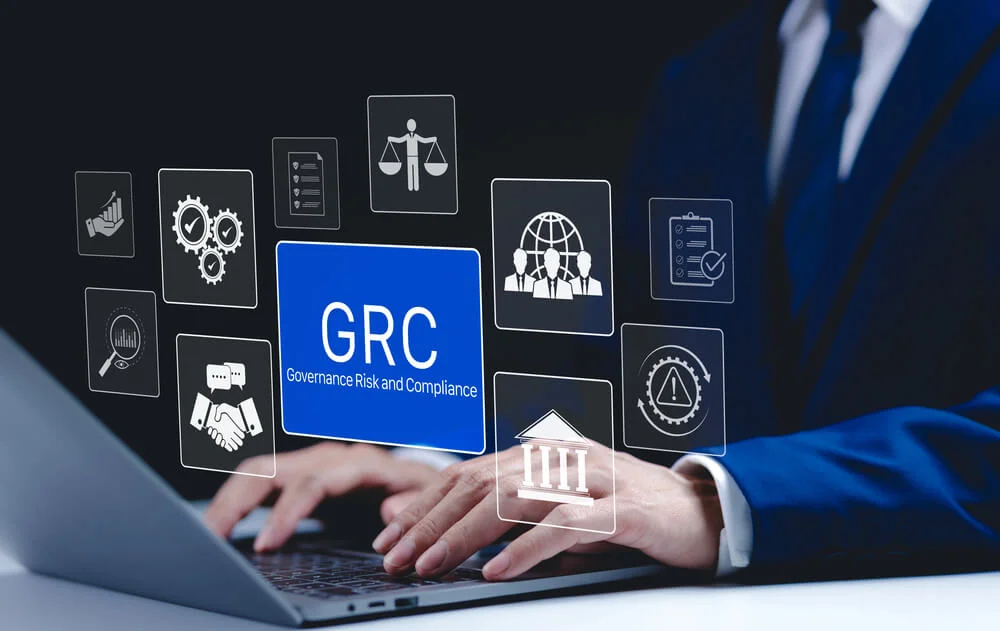Annual Compliance Review Checklist: What To Include
If you struggle to remember common compliance issues, create an annual compliance review checklist to ensure that your data and customer information receive protection year-round. Read through our guide to determine your next steps and contact Compyl for assistance automating the process.

7 Items To Include in Your Annual Compliance Review Checklist
Your annual review checklist should include several items that adequately address your internal policies, data breach awareness, and risk mitigation tactics. Here are seven crucial points to address with your leadership team as well as your employees at least once a year.
1. Security Training
Your first order of business should be to ensure that your employees are fully aware of the security measures you’ve put into place to protect your own financial information as well as your customers’ sensitive data. If any of your employees work remotely, security training is doubly important. Ensure that your employees are using up-to-date software, that they change their passwords regularly, and that they are aware of updated policies as well as legal issues surrounding compliance.
2. Policy Accessibility
Security training by itself isn’t enough even if it’s comprehensive. It’s important to make any legal requirements and company-wide policies accessible to your entire workplace so that your employees have quick access to relevant issues and guidelines. You may choose to hand out physical copies or, if you have several remote employees, you can elect to host these important policies in the digital space as part of your annual compliance review checklist.
3. Employee Monitoring
Many breaches originate from within: Up to 80% of security breaches occur because of compromised employee credentials. If your business employs remote workers, your risk of losing control of sensitive information increases. In addition to providing employee education, you may wish to monitor your employee’s work or login data in your financial systems to ensure that everyone is on the same page when it comes to protecting sensitive data.
Similarly, you may need to put rules in place for device usage, upgrade employees’ work computers, and take other measures. In the United States, monitoring of employee devices within reason is legal — but be sure to address these issues with your team before implementing new policies.
4. Data Breach Awareness
One of the worst-case scenarios in financial compliance is a breach that goes undetected. An important item on your annual compliance review checklist should be to ensure that you have an “alarm system” in place for any breach or potential breach.
Work with your own team as well as forensic experts who can determine the extent of the breach, and make sure that nobody deletes or destroys evidence that could be useful. Keep track of all methods used in the investigation.
5. Incident Response
Do you have a plan in place in the unfortunate event of a data breach? Experts recommend that you establish a multifaceted approach for handling breaches:
- Identify where the breach came from. The faster you act, the more data you can save.
- Notify appropriate parties. You may need to alert law enforcement, credit card bureaus, other businesses that contract with your organization, and clients with compromised information, depending on the size and scope of the breach.
- Take action to remedy the breach. This could include shutting down part of a system, immediately contacting your IT team, or temporarily locking down an employee’s email.
- Analyze and plan for the future. After you’ve fixed the problem, you need to make sure it can’t happen again. Determine how your system or institution needs to change to prevent a breach in the future.
6. Risk Mitigation
Risk mitigation is an important part of your annual compliance review checklist. How will you minimize or prevent compliance risks? It’s not possible to completely eliminate risk, but it is entirely possible to safeguard your data. To begin with, try to avoid data silos, or isolated data that only a few people in your organization have access to.
Another easy security risk to minimize is making sure employees don’t store sensitive information on personal devices such as laptops, phones, or home desktops that aren’t managed by your network. Such rules may pose a slight inconvenience at times (such as an employee not being able to send an email from his or her phone when he or she forgot a work device), but it will be worth it when it comes to protecting your customer’s data.
Similarly, you may want to put together a centralized IT department if you do not already have one. This ensures that your encrypted and sensitive data exists in the same place, on reliable equipment, and that reliable employees have access to it.
7. Customer Education
Your clients and customers depend upon your ability to keep their sensitive information safe. This includes their personal identifying information such as name, address, demographics, and Social Security number. It also includes their financial information and passwords. Educating your clients to increase their awareness of how you protect their information — and how they can help you keep this information safe — can boost the public’s trust in your institution and ensure great relationships with your clients for years to come.
At the very least, make sure they understand the following points:
- How their actions (creating strong passwords and enabling multi-factor authentication when possible) directly impact the security of their information and finances
- Your role in keeping their information safe, including how you store and encrypt data and whether you use artificial intelligence to track data
- Who to contact if they suspect compromised information, data, or passwords
Free Security Assessment Today
Automate Your Annual Compliance Review Checklist With Compyl
Creating an annual compliance review checklist is a simple yet efficient way to ensure that your business remains compliant — and automating your compliance items can help you remain on top of your checklist year-round. Give yourself peace of mind with an all-in-one, continuous compliance platform that can evolve with the size and needs of your business to provide year-round compliance. Get in touch today to request a demo of Compyl to see what it can do for you.
FAQ's
Companies should prioritize items on their annual compliance review checklist by assessing the specific risks and regulatory requirements relevant to their industry and operations. This involves identifying areas with the highest impact on legal obligations and business continuity.
Technology plays a crucial role in automating the compliance review process by streamlining data collection, monitoring compliance in real-time, and facilitating the management and reporting of compliance activities. Various compliance management software solutions are available to help businesses automate these tasks.
While the core elements of an annual compliance review checklist can be broadly applicable across industries, customization is essential to address the unique regulatory and operational challenges of different sectors. Businesses should tailor their checklists to reflect industry-specific compliance requirements and best practices.




